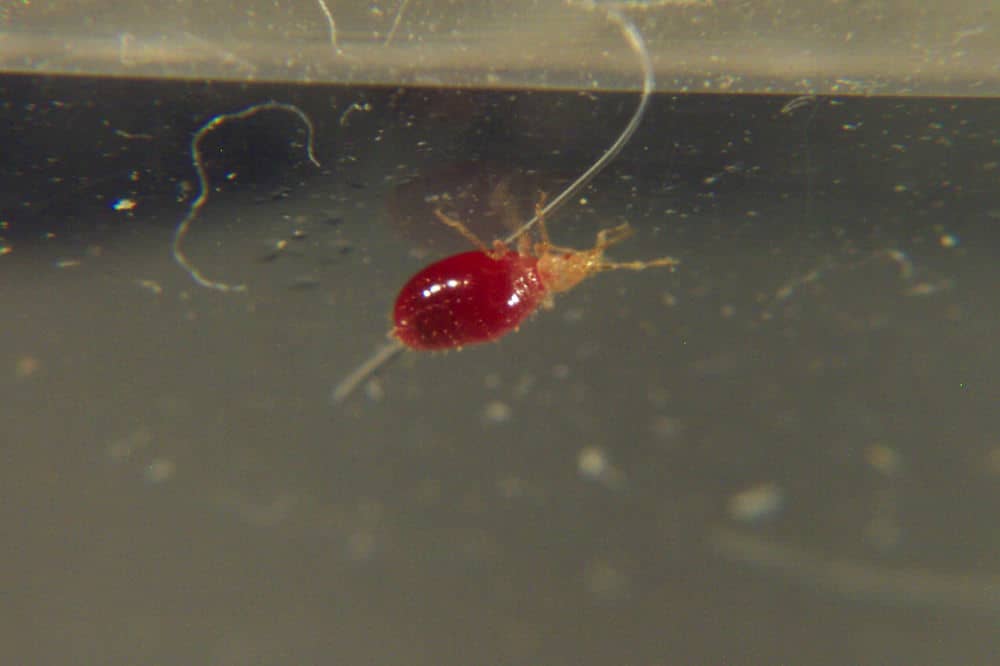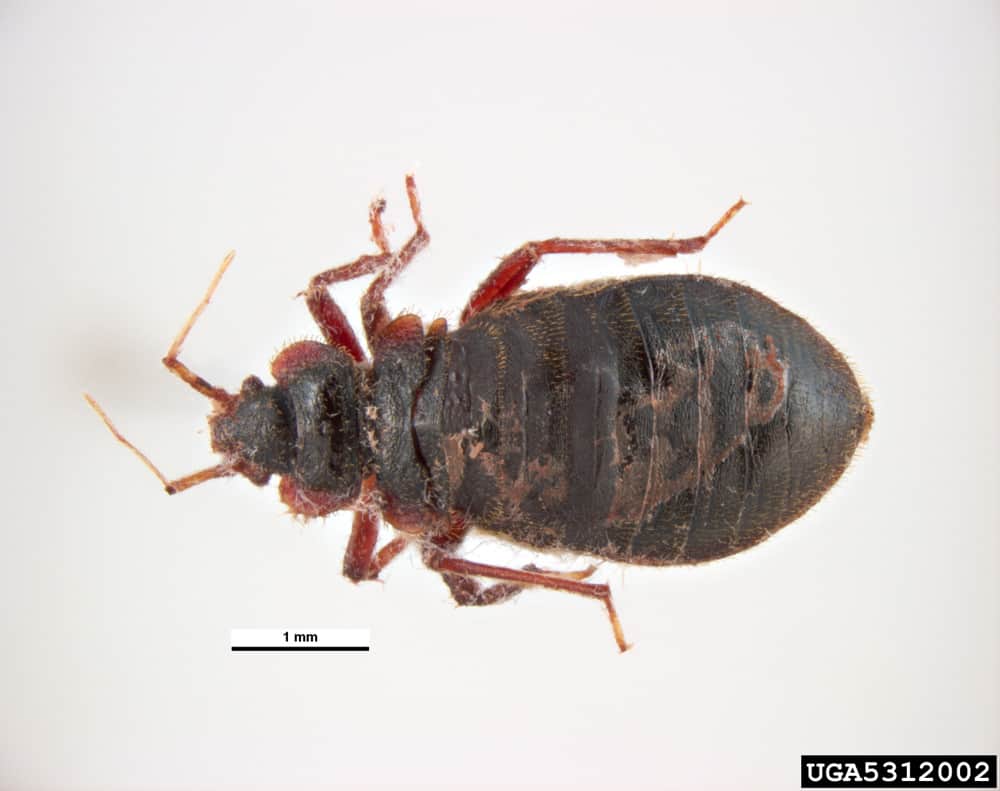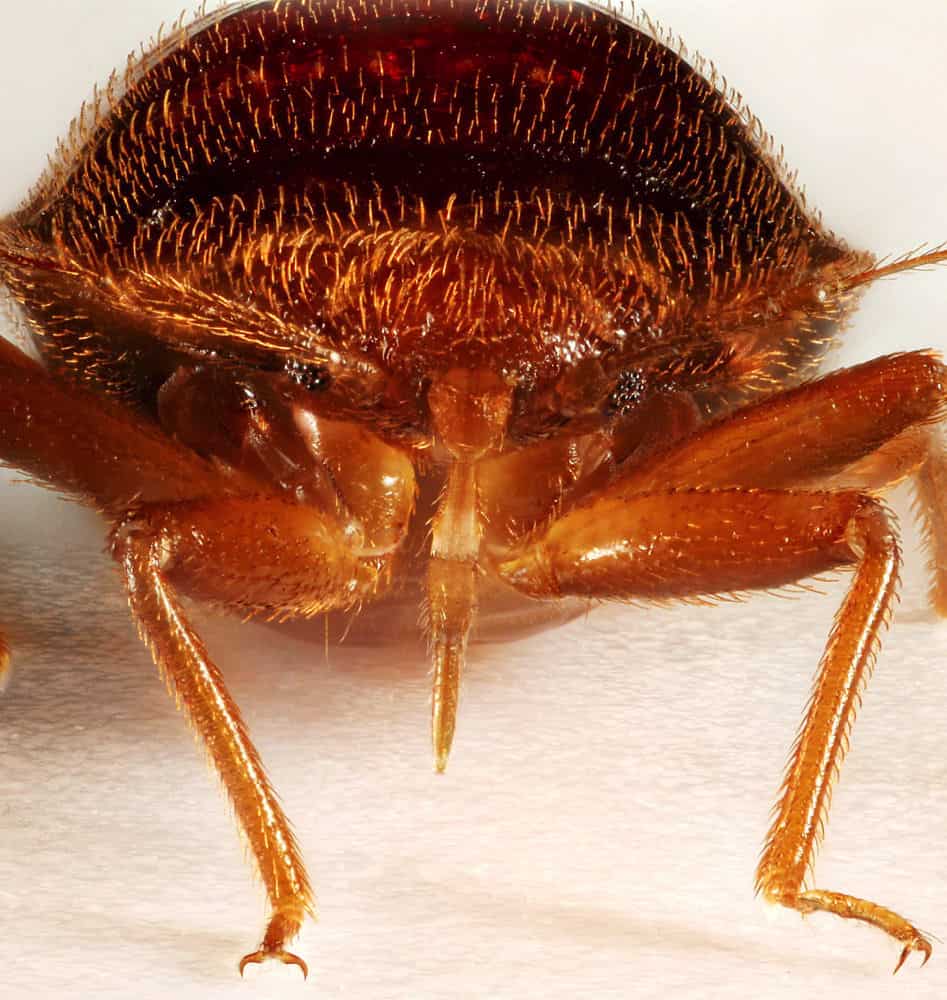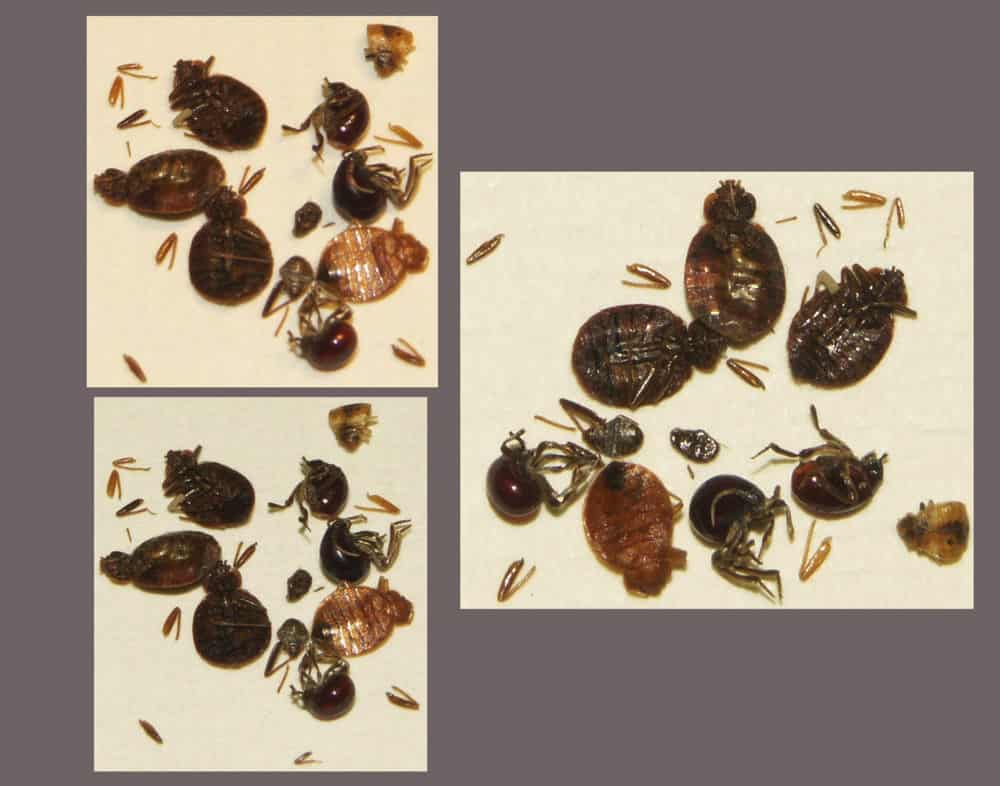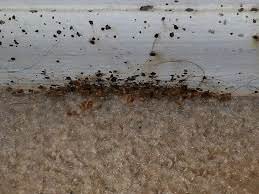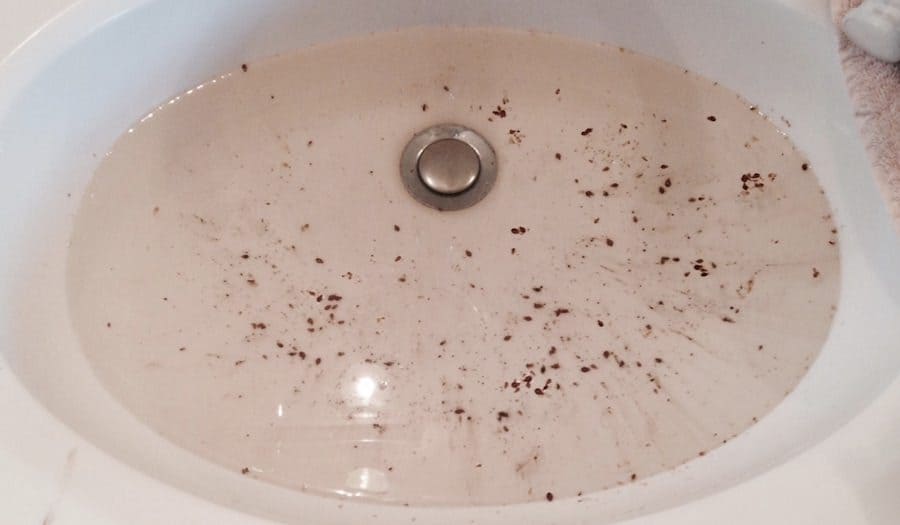Best Bed Bug Mattress Covers & Encasements
When dealing with a bed bug infestation, one of the best preventative methods is a mattress encasement. They eliminate all the seams and crevices, that bed bugs love to hide in. However, finding something that works, without being too expensive or too cheaply made can be a daunting task.
Most of the covers look similar at first glance – they’re white, zippered enclosures – but they have many different characteristics that can determine which one is most suitable for your needs.
With that thought in mind, I’d like to show you the products that I think are best for protecting against bed bugs, then go over some common questions about topics like what they are, how they work, and what you should look for when deciding which one to buy.
What Are The Best Bed Bug Mattress Covers / Encasements?
The following products are the ones I’ve found best for controlling bed bugs:
Bed Bug Sleep Defense System
Hospitology’s sleep defense system is a passive, easy-to-use deterrent that helps stop bed bugs from nesting in your bed. The cover itself is a 100% polyester knit that can stretch up to 18 inches, without sacrificing the durability of the fabric. It’s available in all standard sizes, with the price ranging from around $25 for the small versions to $50 for larger versions.
As a full encasement, this product also blocks allergens and other potential problems that can come from a mattress. The manufacturer offers a five-year limited warranty, and most people will get at least that many years of use out of it. Twin and Full sizes are easy to put on alone, but anyone ordering for a larger mattress should consider getting an extra pair of hands to help.
That said, I do not recommend using only this product. Its purpose is to protect your mattress (another version can protect your box spring), but it’s not quite slick enough to stop bed bugs from traveling up if they want to. Instead, it mostly serves as a deterrent from nesting in your bed. Some bed bugs will travel from elsewhere in your house to eat, which is why a second layer of defense is vital to stopping them.
The exception to this is if bed bugs are only living in your mattress – this is rare, but I’ve seen cases like that now and then. If all of the bed bugs are trapped inside the case, they’ll die natural deaths before too long, and you won’t have to resort to another, more expensive treatment.
Pros:
- Affordable
- Extremely effective at keeping bed bugs away from your mattress
- Resists small amounts of liquid, such as spilled drinks
- Does not trap heat
Cons:
- Only protects your mattress – bed bugs can still climb up the outside
- Bed bugs may try to live under the flaps of this product
- Soft enough that some sheets may have trouble staying put
- Some people find this product less comfortable
SafeRest Premium Zippered Mattress Encasement
This mattress encasement is a bit higher in quality than Hospitology’s system. The basic idea of the product is the same – by completely sealing your mattress, you can stop bed bugs from getting in or out and encourage them to live elsewhere, while you work on a more permanent solution.
Encasements are also popular for people who are going to bring in a new mattress and want to make sure anything living in it dies there, too.
There are three major differences between this and the previous product. First, the surface of SafeRest’s system is made of terry cotton, which uses a breathable, hypoallergenic membrane to reduce noise and stop allergens. This gives it a direct benefit aside from stopping bed bugs.
Second, the Micro-Zipper technology uses ultra-fine zipper teeth to prevent bed bugs from moving through at any stage of their life. This does make a difference since zippers that are too large are effectively worthless against pests.
Finally, this product comes with a ten-year warranty. To put that into perspective, that’s long enough for a third-grader to graduate from high school if you need to protect a child’s bed. I love longer warranties on pest control, and the mix of quality and longevity is enough to make me happily recommend this product.
Pros:
- Naturally absorbs moisture
- Completely waterproof
- Micro-zippers are excellent for resisting bed bugs
- 10-year warranty
- Machine washable
- Deep enough to allow for mattress toppers (like foam)
Cons:
- Multiple depth sizes mean it’s a little harder to figure out which one to get
- Some people find it to be a little big for their mattress
- Zipper problems are somewhat common, which makes removing it harder
- Needs to be washed very carefully, or it may come apart
SureGuard Mattress Encasement
SureGuard’s line of mattress encasements is highly competitive with SafeRest’s line, though I’ve found them to be a little better at snugly fitting a bed. Like most of the better encasements, this product has a 100% cotton terry top, with stretch-knit polyester on the other five sides to provide a snug fit. Polyurethane is used as a waterproofer on all sides.
This particular encasement is also rated against dust mites, pet danger, pollen, mildew, and mold. Before you rush out to buy it, though, I’d like to point out that the rating is against these things passing through the encasement. It’s not going to do anything against problems like pet dander from a pet sleeping on your bed. All it’s going to do is keep anything already present from escaping.
As for bed bugs, this is essentially the same as the previous product – the ultra-fine zippers stop pests from moving in or out, helping to keep them away from your bed and encouraging them to nest elsewhere. This is precisely what we want as part of a comprehensive elimination strategy – just remember, encasements alone are not enough to exterminate pests if they’re already elsewhere in your house.
If there’s anything that sets this product apart from the competition, it’s the comfortably snug fit on most mattresses. Naturally, I can’t guarantee it will perfectly fit your bed, but I hear more positive comments about the fit with this encasement than with any of the other protectors I’ve recommended.
Pros:
- Highly effective at keeping bed bugs out of your mattress
- Effective against a wide variety of allergens
- Excellent fit on most mattresses
Cons:
- Not quite as waterproof as it likes to claim
- You can void the warranty if you don’t have someone else to help you put it on
- Might require several cycles to get dry
LINENSPA Zippered Encasement
Linenspa’s mattress encasement is one of the more affordable options, usually ranging from $22 for a Twin up to $33 for a California King. Pillow encasements are also available for about $15 each. This encasement is made entirely out of polyester, helping it resist moisture and improving longevity when compared to some of the other options on this list.
As a bonus, this encasement is easy to wipe clean, so you won’t need to put it through the wash as often – that’s important if you have trouble getting encasements on and off, and could be a deciding factor in favor of this product.
Like the other encasements on this list, Linenspa’s option offers a straightforward approach to preventing bed bugs: zipping a mattress up so tight they can’t get in or out.
I’m rather fond of the zip enclosure used here, which provides a tighter seal against both pets and insects. Covering the zipper threads also helps to block any liquids that may splash against the side of the mattress, providing a solid defense for what’s otherwise a hole in the waterproofing.
The downside to this product is that it isn’t rated against as many allergens as some of the alternatives. In my experience, many of the people who have allergies, dust problems, or mold in their bed, don’t even realize it, and that stops them from getting the best night’s sleep even after the pests are gone.
Also, some people find polyester to be uncomfortably warm in comparison to cotton terry covers. Part of that has to do with your environment – how many blankets you have, how warm your house is, the airflow in your room, and so on – but it’s a point worth keeping in mind if you’re already feeling warm at night.
Pros:
- Sturdy polyester fabric on all sides
- Reasonably waterproof
- Excellent zipper setup to block bed bugs
- Easy to clean
- Competitive pricing
Cons:
- May feel warmer than cotton-top encasements
- Sewing can be hit-or-miss, with some products arriving with tears
- Thin material is more prone to damage when putting it on or taking it off
Utopia Bedding Zippered Mattress Encasement Cover
Utopia Bedding’s encasement is an excellent competitor for Linenspa, and I’ve often found myself recommending this for people looking for a polyester encasement. A few important things set this cover apart from the previous option.
First, this encasement has hypoallergenic protection, which means it’s better against problems like bacteria and allergens. We spend about a third of each day on our beds, and anything that helps you breathe better is worthwhile.
Next, this cover includes a velcro flap at the end of the zipper. This is more important than most people realize – without velcro, bed bugs can sometimes push the zipper aside and get in or out of an encasement. They’re not strong enough to get through velcro, though, so you can be confident anything trapped inside will stay inside.
Finally, the stretchable fabric is relatively easy to install and offers a snug fit on most mattresses. As always, sizes vary enough that no cover can guarantee a good fit, but my experience with this cover has been solid all-around. That said, encasements tend to fit better when your bed is towards the larger end – an 18″ encasement on a 15″ bed will always be somewhat loose.
Prices for this protector range from $20 for a Twin size to $27 for a California King, making it highly competitive with other mattress encasements and a good overall contender.
The biggest problem with this encasement is endemic to covers in general – while they’re good at stopping liquids from getting through to the bed, the outer cover can still absorb things like sweat and urine. That means it’s not a good solution for those types of problems, and the often proclaimed line about being waterproof, doesn’t mean as much as manufacturers would like you to think.
Pros:
- Fits most beds well
- Competitive pricing
- Durable polyester can stand up to multiple washings
Cons:
- Sometimes shipped with holes that defeat the purpose
- May be loose on shallow beds
- On rare occasions, zippers have been known to break
Evolon Allergy Mattress Protector
Unlike the other mattress encasements on this list, Evolon’s protector is more focused on protecting sleepers from allergens. It still does a fine job stopping bed bugs and dust mites, but that’s more of a side-effect than its main purpose.
The cover itself is made from EVOLON fabric- a cotton-like non-woven microfilament, sturdy enough to hold up to repeated washings and soft enough to feel like cotton. I usually recommend this cover to people who are worried about noise or trapping too much heat. There are no additional chemicals used to treat the fabric or provide a “coating,” since the design of the fabric does all of the work.
The most notable drawback is that this cover doesn’t even pretend to block moisture. Sweat, urine, and spilled drinks will soak right through to the mattress, though the cover itself is advertised as absorbing up to 400% of its weight in water. If you want to block liquids, you’ll need to put a plastic cover on over or below this, and that definitely reduces comfort and increases noise.
The other drawback is the price. EVOLON protectors start around $28 for a 9″ Twin and go all the way up to $50 for a California King, making them measurably more expensive than the competition. Without even a waterproofing layer, some people just won’t be able to justify buying this product despite its generally high quality.
That’s unfortunate, but as I’m always telling my customers, it’s best to buy for the problems you have.
Pros:
- Extremely good at blocking allergens and bed bugs
- Made entirely out of fabric, so there’s no rustling at all
- Easy to wash
- More durable than most of the competition
Cons:
- Expensive
- No waterproofing layer
- Snug fit means there’s not a lot of room for errors in mattress sizes
What Are Bed Bug Encasements & Mattress Covers?
This is a question I’m often asked when recommending solutions to bed bugs, dust mites, and other infestations. Encasements and mattress covers are protective layers for mattresses and box springs designed to prevent bed bugs from moving in or out.
They are not extermination devices, except for the situation I’m going to describe below. Too many people buy these with the expectation that they’re going to stop bed bugs from reaching them, then get upset when they find out these products don’t even come close to working that way.
Encasements tend to follow the same physical structure: They surround a mattress and have a zipper used to close off the inside. Better covers have Velcro over the ends of the zipper to stop bed bugs from wrestling their way through.
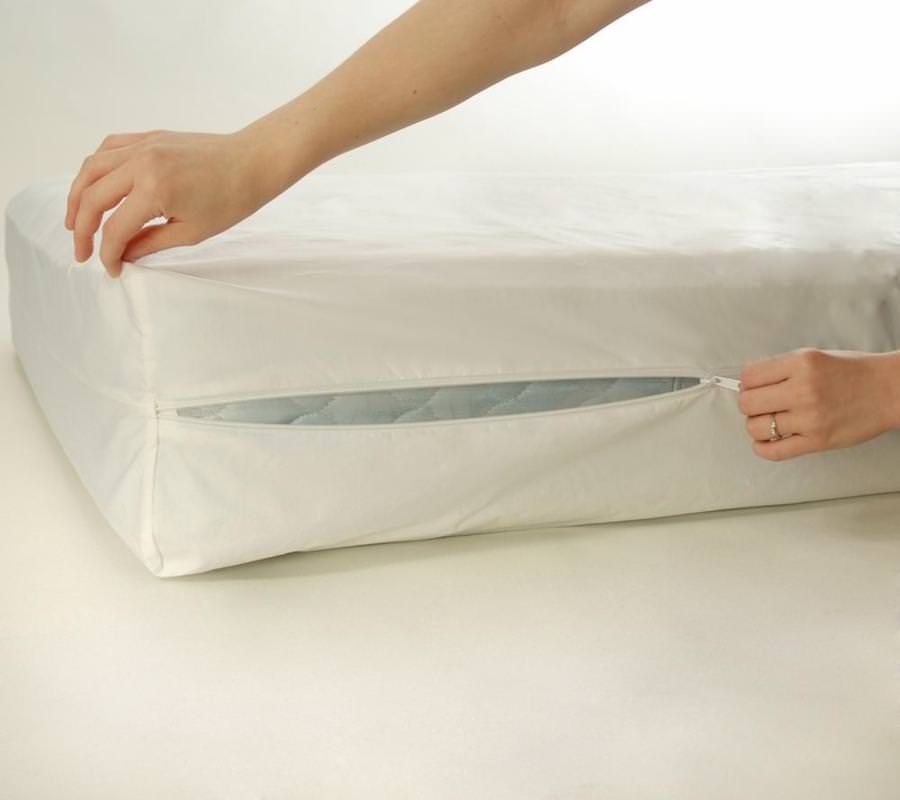
Some products use the same material on all sides, while others have a top made out of a different material. This is intended for comfort more than anything else and doesn’t affect the performance of the cover.
Common materials include cotton terry (especially for tops) and polyester, but products like EVOLON use their own fabrics, instead of more commonly-available cloth.
The material you get does matter. Cotton terry is cooler and more comfortable but usually doesn’t last as long. Polyester is durable but also tends to run warmer and make more noise during the night.
Now and then you’ll find a blended fabric that tries to balance out the benefits and drawbacks, but these are usually more trouble than they’re worth.
How Do Bed Bug Mattress Covers & Encasements Work?
Covers and encasements are similar products, and often confused with each other, but there are a few key differences in how they function. You should know these before deciding on a product.
Mattress Covers
Mattress covers are more like pads. They are predominantly there to add comfort and to protect the top layer of the mattress from stains. They do not encase your mattress. This therefore, leaves your mattress vulnerable to spillages and allows bugs to hide in the seams and crevices.
Also, covers are sometimes referred to as “chemically impregnated covers” because they’ve been sprayed with chemicals designed to kill or repel bugs. Unfortunately, this isn’t as effective as it sounds. Most covers aren’t successful at repelling bed bugs, and worse, the chemicals aren’t strong enough to kill the bed bugs as they move up or down the cover.
Chemically impregnated covers generally don’t work, and I don’t recommend them outside of extremely specific situations. It’s always best to use as few chemicals as possible, especially if you have children or pets.
It’s also worth noting that bed bugs are talented at evolving to resist certain types of insecticides. Unless you get all of them, any chemicals you use are likely to get less and less effective over time, which defeats the purpose. Encasements, on the other hand, will retain their full effectiveness for the foreseeable future.
Encasements
All of the products reviewed above are encasements. Unlike chemical covers, these are a passive form of protection designed specifically to trap bed bugs and stop them from moving in or out of a mattress.
Please read the previous sentence again – this is important. Encasements are only designed for that purpose and do absolutely nothing against bed bugs that may be residing in other parts of your house.
As part of their efforts to stop bed bugs from moving around, most encasements add an interior waterproofing layer. This is what produces most of the plastic-like noise when you move around. If you stop hearing it, there’s a good chance the protector is no longer waterproof.
For that matter, “waterproof” probably isn’t the best way to describe most of these products. “Water resistant” is a little more accurate, especially for small amounts that can be quickly cleaned up. Larger amounts of liquid – like a child wetting the bed soon after they go to sleep – will usually end up soaking through to the mattress.
What To Look For In A Bed Bug Mattress Cover/Encasement
There are a few things that I always encourage people to think about when they’re deciding on the right type of encasement.
First, consider the material itself. There are many different fabrics available, and they do impact your comfort. Soft fabrics like cotton terry and EVOLON are best for keeping things cool at night, while polyester is measurably warmer.
Temperature effects can be mitigated if you have a layer between the encasements and your sheets. For example, putting a 2-inch thick foam pad on top of the encasements, then your sheets on top of the foam will almost entirely mitigate the effects of the encasement.
Next, decide how much noise you’re willing to tolerate. In general, covers that are more waterproof also tend to be noisy, while covers without this added protection, are softer and quieter than the competition.
I don’t recommend using a bed bug encasement for waterproofing. If you need to stop liquids, a full plastic protector is the best way to go. This is especially true if you’re dealing with urine, since the smell can linger and be more than a little uncomfortable.
After that, take a look at the allergens the protector is rated against. This is usually a side-effect of blocking bed bugs, but it does help if you can trap some common allergens in your bed. As I mentioned above, though, this does absolutely nothing about allergens that come from the top. You’ll still need to wash your sheets (and the protector itself) on a regular basis. Most encasements mitigate allergies but don’t entirely stop them.
Finally, think about the price point. Encasements rarely exceed $50 for the largest sizes, but you can often get a perfectly adequate protector for half that price. In most cases, though, I think the price is the least-important consideration here. A few dollars either way isn’t going to make a big difference in your life, but how well you sleep at night will affect the rest of your life.
Out of all the mattress encasements I’ve recommended, I like the EVOLON system the most. It’s excellent at stopping allergies, effective at trapping bed bugs, and it doesn’t have any of the noise that most encasements do. The added quiet and comfort is fantastic after a long day of work, and I can wash it often enough to keep the smells out.
This product isn’t for everyone – after all, not everyone is in the same situation as me – but it is my top recommendation if you don’t need to block liquids.
What To Watch Out For
Despite their many positive qualities, there are a few things to watch out for. Most importantly, not all manufacturers produce high-quality products. Even those with strict controls ship out faulty products on a regular basis, so it’s important to check for rips or tears when you first get the product.
You’ll also need to pay close attention to the warranty. It’s entirely possible to void the warranty for something as simple as trying to put an encasement on yourself, and that can be trouble if you need to return yours.
In my experience, about one in five covers have some manufacturing defect. There is a real possibility yours will be flawed, so be ready to ask for a return ahead of time. If a product offers an extended (5-10 year) warranty, consider asking the manufacturer for a copy of the terms before you buy.
Aside from the flaws, you should also pay attention to the characteristics of your cover. Some have a looser fit than others, and having an encasement bunch up underneath you at night can be uncomfortable.
You may need to look for ways of making the fit a little more snug, such as by firmly taping or sewing parts together. Be sure to use the right tools for this, or you may end up creating holes that bed bugs can escape through.
Similarly, some encasements are a little slippery and make it hard for other covers to stay on. You may need to get creative with your solutions, though I’ve found that putting your sheets around a covering (like a foam topper) works well.
What If Your Mattress Is Already Infested With Bed Bugs?
Here is where things get fun. Mattress encasements aren’t usually an extermination tool, but if bed bugs haven’t spread to anywhere else in the house, encasements are by far the best way of treating them.
The idea here is simple: By trapping bed bugs inside the mattress, you can starve them and simultaneously ensure that they can’t spread to another part of your house. This is easier and less expensive than practically any other treatment, and it’s always a delight for me when I can implement it.
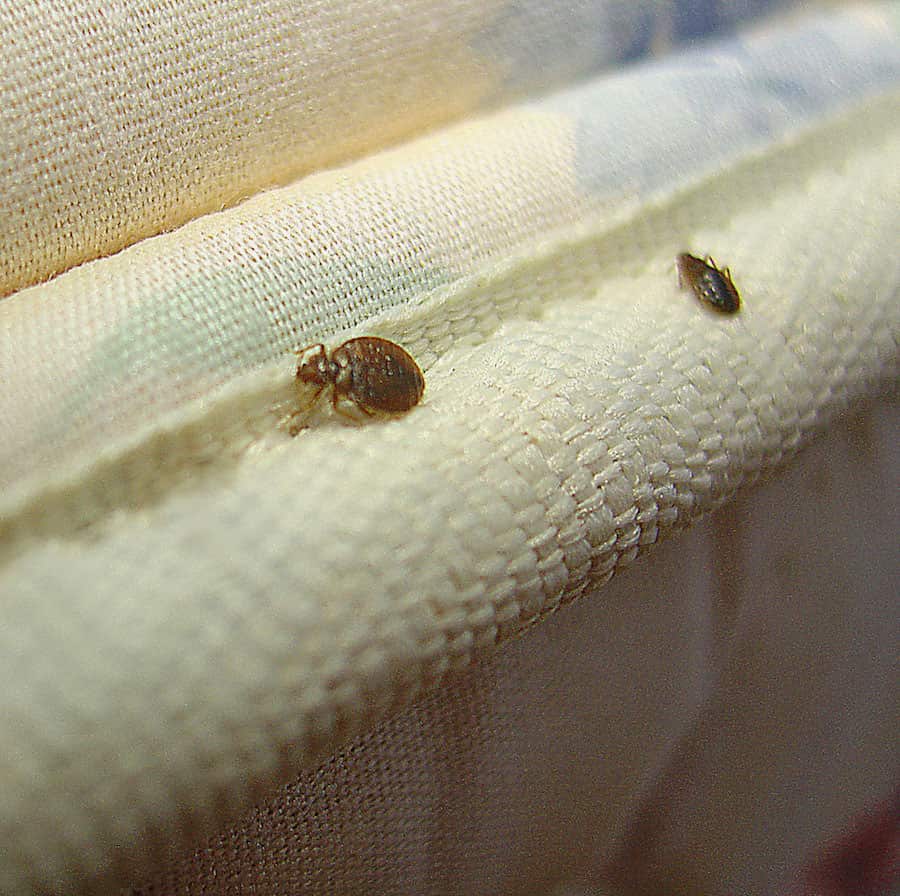
This is also a good strategy if you’re buying a mattress. By encasing it at the place you buy it, you can be sure that anything you carry to your home isn’t going to spread. I recommend this for every used mattress, but it’s not necessary for new mattresses that come encased in plastic from the manufacturer.
While bed bugs are rarely fatal, unchecked infestations can cause a variety of health problems. In 2009, for example, a 60-year-old man was reported as developing anemia, fatigue, and lethargy after living in a particularly nasty infestation for several months without resolving it. This is why it’s so important to treat infestations as soon as you can – you don’t know how many more bugs are about to hatch.
How Long Do You Need To Keep An Encasement On An Infected Mattress?
Encasements should stay on a mattress for at least five months, but I usually tell people to keep them for seven-and-a-half months just to be sure. The main goal is to deny food for an extended period since bed bugs can live for two years or more in safe environments.
Shutting them off for more than half a year ensures that they have no access to new food and will run out of any additional sources of food they may have in their living spaces. Keeping an encasement on your bed requires essentially no effort, so taking extra time just to be sure they’re all dead is rarely a problem.
Unfortunately, if you’re using encasements for extermination, you can’t take them off and wash them. This is a problem if you’re also trying to stop urine or other liquids, and in these cases, I recommend putting an additional plastic cover around the encasement.
Should Pillow Encasements Be Used Too?
Yes. Bed bugs can live in pillows just as easily as they can live in mattresses and box springs, and it’s always better to protect yourself when you have the chance. Few things are more horrifying than thinking you have your pests under control, only to find out they’re living even closer to your head than you thought. I’ve heard more than a few screams in my time as an exterminator.
The Original Sleep Defense System Pillow Encasements
This pillow encasement is a companion to the first mattress encasement I reviewed here. It functions similarly to the mattress cover, but only has a zipper on one side. This allows for tighter seams and a reduced chance of tearing when compared to a normal mattress encasement.
Also, a good pillowcase can prevent things like sweat and saliva from staining your pillow while you sleep, and that’s always nice to see.
However, as with all pillow encasements, there are a few major differences you need to be aware of.
First, pillow encasements don’t last as long as mattress encasements. Many are only rated for two years or so, and they need to be replaced on a regular basis. It may be worth getting a more expensive but longer-lasting pillowcase. Paying twice as much for something that lasts four times as long is a great deal.
Second, waterproof means airproof. Pillowcases like these don’t “breathe” very easily, so you may find that the pillow is distinctly warmer than what you’re used to. The best way to remedy this is to lower the temperature of your room when you’re sleeping, which will help to pull heat away from you. (As a bonus, this can save you money on your heating bills – never a bad thing.)
Finally, prices vary wildly. Pillowcases can be as expensive as full-on mattress cases, so you’ll need to be smart when shopping and look around for a good deal.
This particular product usually retails between $40 (standard) and $50 (king), but discounts of 70% or more have been known to happen. If you can buy them on sale, consider getting two packs. That way, you’ll have replacements when your first set wears out.
Pros:
- Prevent bed bugs from nesting near your face while you’re sleeping
- Help to keep your pillow cleaner for longer
- Inexpensive solution that can help with many problems
Cons:
- Tend to make pillows warmer
- Shorter lifespan than some other products
- Waterproof covers can be quite noisy
Should Bed Bug Mattress Covers & Encasements Be Cleaned Regularly?
That depends on what you’re using them for.
If you’re using an encasement for extermination, you should not take it off until the full extermination stage is over. Period. Yes, this applies even if the product is torn or otherwise damaged somehow – it’s better to seal off the problems (with tape or another method, depending on the issue) and leave the encasement in place. Getting rid of bed bugs from a mattress is definitely not an easy task.
I say this because allowing bed bugs to roam free for even a short time could lead to an infestation that spreads across your whole house and will cost a thousand dollars or more to remove. That isn’t worth the trouble. If you’re expecting damage to the protector, just put a plastic layer on top. It’s not as comfortable, but a full extermination is more important than sleeping on plastic, especially if you can add an additional layer of cushioning.
If you’re using mattress encasements to block allergens and generally improve rest, then yes, they should be washed on a regular basis. People’s needs vary, but in most cases, washing your encasement once a month is appropriate. Be sure to follow the care instructions exactly, since failure to do so could void the warranty and destroy the cover.
What Else You Need To Know Before Using Covers & Encasements
There’s one more thing I should mention about mattress encasements – the color. Bed bugs produce dark, distinctive marks when they’re present, which are extremely easy to see on the white color most encasements use.
This is entirely on-purpose – the color is there to help you figure out if you have any infestations outside of the mattress (and potentially save you some inspection money).
If you don’t see any dark spots appear on the outside, then you don’t need to hire an exterminator to examine your house and create a plan to clear it. That’s (unfortunately) less work for people like me, but I know most families don’t want to pay for an inspection unless they know they need it, and this is a sensible alternative.
On the other hand, if you do see droppings and other marks, you know it’s time to proceed to something a little more robust. Either way, it’s an affordable, do-it-yourself way to figure out how bad your problem is and guide you toward your next step.
Other Useful Bed Bug Products
Aside from encasements, there are some other products that can help you treat (or prevent) an infestation. I often end up recommending three products in particular to homeowners that want treatments.
First, bed bug sprays can quickly eliminate bed bugs wherever you see them. This isn’t ideal for getting rid of a colony unless you have easy access to it, but it’s much more comfortable than trying to squish them one by one.
Next, bed bug traps are passive lures that can bring them close to your bed, then ‘catch’ them in a moat they can’t crawl out of. Every bed bug eventually needs food, so while this isn’t the fastest treatment, it’s fairly effective as long as your house isn’t constantly exposed to new infestations.
Finally, diatomaceous earth can help kill bed bugs over several days/weeks by dehydrating them and helping funnel them to trapped areas. Bed bugs can’t develop a resistance to DE the way they can to pesticides, so this is an ideal trap for any groups that are living in the walls of your house.
Summary
Mattress encasements are an effective way of trapping bedbugs inside a mattress, exterminating them while they’re there, and preventing infestations from reaching a mattress. This makes them an excellent preventative measure if you’re getting a new mattress, but only one of several tools you’ll need to use if you have a bigger infestation.
Encasements are broadly sorted by price, the material(s) they’re made from, whether or not they resist liquids, and overall fit. It’s better to have a case that’s a little loose – if you try to force a tight case on, you could tear it and stop your bed bug mattress cover from fulfilling its intended purpose.

